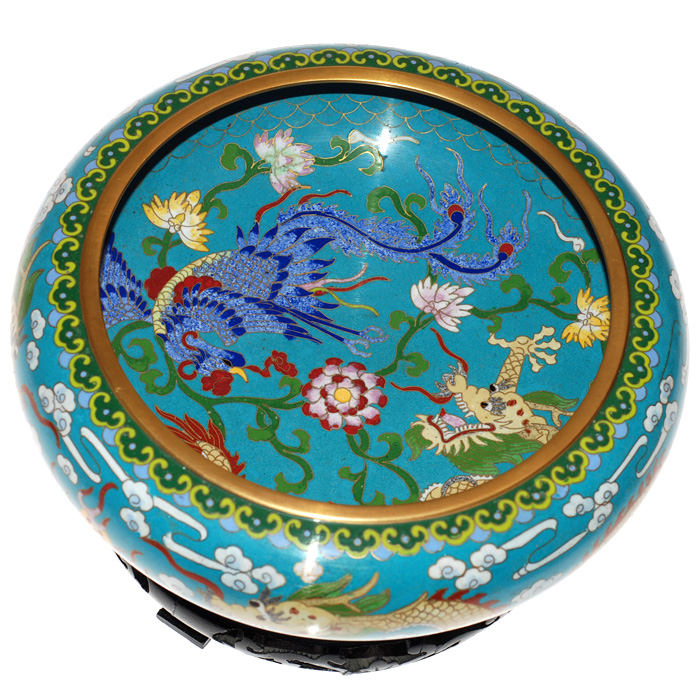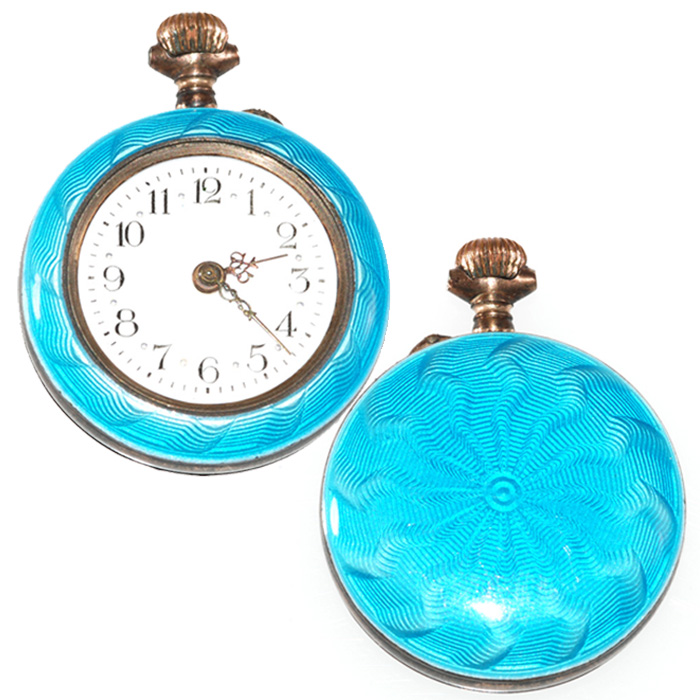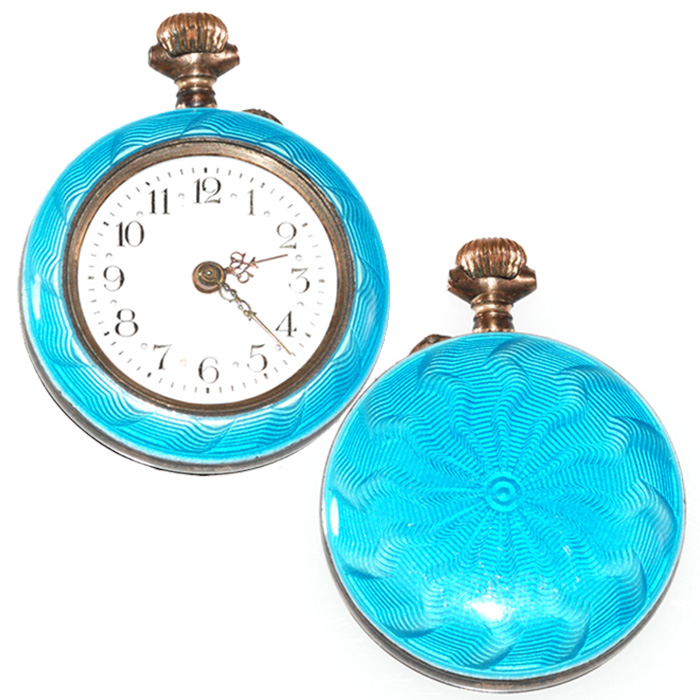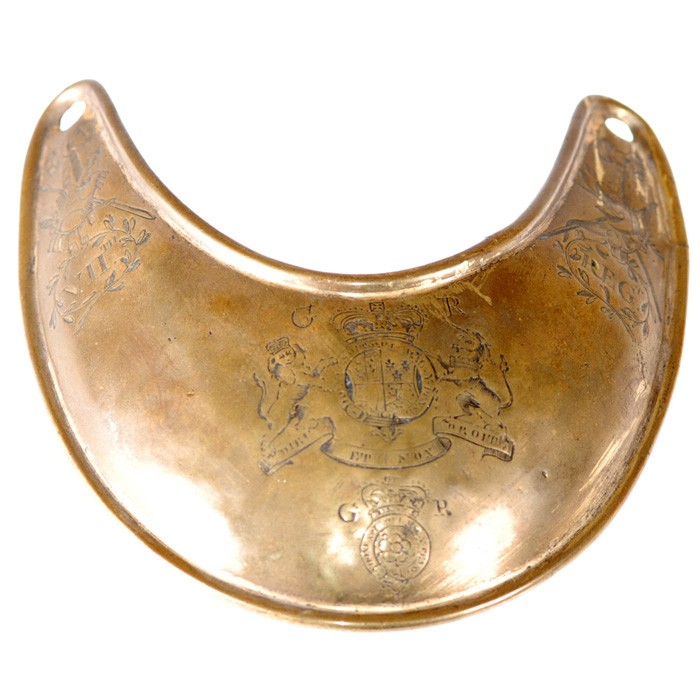
Are you familiar with cloisonné? Cloisonné are metalwork objects with compartments on the surface made with wire or thin metal. These compartments are filled with different colored enamels to create a visual image or pattern. Chinese cloisonné was produced from as early as the 13th century. Japan did not produce cloisonné until the mid 19th century. We recently had a consignor bring us Cloisonné he assumed to be all Japanese. Upon inspection, we found they were not all Japanese. Chinese and Japanese cloisonné can be similar, but there are differences.
Chinese and Japanese cloisonné have many similar traits but certain aspects can help define the piece’s true origin. Some of these traits include border motifs, counter enamel, maker’s marks, gilding and finish, and design subjects.
In your search for cloisonné are you looking specifically for Chinese or Japanese cloisonné? Or do you just buy a piece because you “like the look of it?” Either way, when hunting for cloisonné, here are a few tips to identify its country or origin.
|
Chinese |
Japanese |
| Border Motif |
Ruyie border – upside down clover leaf with a dot in the center |
Band of small circles – the smaller the better |
| Counter Enamel |
Always, teal/blue color |
Sometimes, can be “orange peel” textured |
| Marks |
“China,” “Made in China,” imperial seal, paper label, nothing |
Usually not marked. If marked, can be wire or metal tablets on enamel, hand painted on enamel, etched, or impressed. |
| Gilding and Finish |
Gold gilt, glossy enamel surface. Older pieces can have pitting |
Dark patina on metal. Some have gold, silver, or gilt. |
| Design Subjects |
Dragons, seasonal flowers, other nature inspirations |
Fabric-like textures, dragons, birds, leaves |
Motifs
Chinese
A sure sign of a Chinese cloisonné is the Ruyie border. This border represents the Chinese imperial scepter’s head and looks like an upside down cloverleaf with a dot in the center of each clover. The symbol is repeated in a band around the top of the piece or separating sections of designs.
Japanese
Japanese cloisonné have an identifiable border, too. Japanese cloisonné have band of small circles along upper rims, edges of handles, or separating designs. These dots are typically brick red, dark blue, white or black in color. The higher the quality of the cloisonné, the smaller the dots.
Counter Enamel
Chinese
The bottom of the base of Chinese cloisonné is coated with enamel. This was done to strengthen the base for the repeated kiln firings. The high heat of the kiln softened the copper base. If both sides of the base were not coated with enamel, the base could crack or warp. Typically, Chinese counter enamel is medium blue or teal in color.
Japanese
Before 1900, bases of most pieces were metal with no enamel applied. After 1900, bases could be heavily decorated with cloisonné wires or have multiple enamel colors. If multiple colors are use, the base can have an “orange skin” texture after firing.
Marks
Chinese
Marks or seals can be impressed or painted in bright enamel on Chinese base enamel. These marks can also be an indicator of age. Cloisonne made for export from 1897 to 1921 will have “China,” in various spellings, on the base. If the piece was made for export after 1921, it will have “Made in China.” An imperial seal may indicate the piece was produced earlier than 1897. However, there was a revival of empire marks after the beginning of the Chinese Republic in 1912. So, if the piece says “China” or some variation there of, and an imperial seal, the piece might be from between 1912 and 1921. Eventually, paper labels were used and often lost over time.
Japanese
Many pieces are not marked because the crates they were shipped in were marked or the pieces were made for local clientel, not requiring exportation marks. If pieces are marked, they can be in a variety of ways including wire or metal tablets on enamel, hand painted on enamel, etched, or impressed.
Gilding and Finish
Chinese
Chinese cloisonné made from 1850-1950 had a copper base that was furnished or gilded with gold. The condition of the gilding is important in dating a Chinese cloisonné. Gilding can wear off over time, exposing the copper base. A piece with more worn gilding is presumed to be older and brighter gilding, newer.
Older examples of Chinese cloisonné had glass flux in the enamel, resulting in uneven coloring and pitting after firing. However, pitted enamels were polished with a wax after firing for a glossy surface. Newer Chinese cloisonné colors are very bright and the surfaces are glossy.
Japanese
Some Japanese cloisonné are gilded, some are not. Most exported pieces were not and show a combination of copper, silver, and brass wires. However, with age, this assortment of metals is hidden under a dark patina. Master craftsmen used higher quality materials like silver and gold mounts and heavily gilded finishes, which remain brighter.
Design Subjects
Chinese
Dragons, seasonal flowers, other nature inspired designs. Chinese art was and stayed very traditional for centuries.
Japanese
Cascading fabric and textures are common on Japanese artworks, including cloisonné. This was strongly applied to cloisonné produced between 1870 and 1900. Other Japanese subjects include the Kiri No Mon, which is Japan’s Empress symbol. This design is three attached leaves with three standing floral stems. Another symbol is the Kiku No Mon, Japan’s Emperor symbol, depicted by a 16-petal chrysanthemum. This symbol is only seen on master craftsmen’s pieces commissioned by the Japanese Palace. The symbol is usually seen at the top of a vase or lid of a box.
Hopefully these tips help you in your hunt for the perfect cloisonné!





